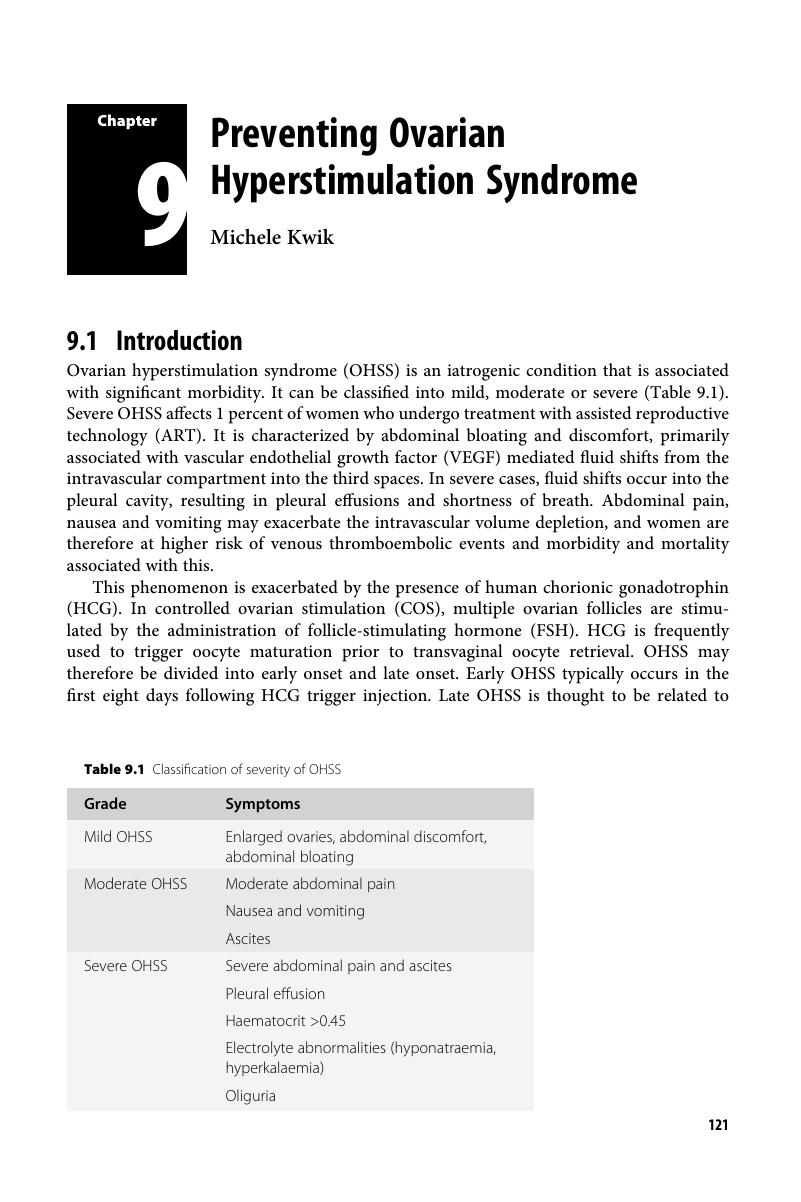Book contents
- How to Prepare the Egg and Embryo to Maximize IVF Success
- How to Prepare the Egg and Embryo to Maximize IVF Success
- Copyright page
- Contents
- Contributors
- Section 1 Oocyte Recruitment
- Section 2 Stimulation for IVF
- Chapter 4 Natural Cycle and Minimal Stimulation IVF
- Chapter 5 GnRH Agonists and Antagonists
- Chapter 6 The Gonadotropins in IVF
- Chapter 7 Controlled Ovarian Stimulation Strategies for IVF and Programing Cycles with Steroid Pretreatment
- Chapter 8 Monitoring the Stimulated IVF Cycle
- Chapter 9 Preventing Ovarian Hyperstimulation Syndrome
- Chapter 10 Oocyte Recovery
- Section 3 Supplements to Improve Oocytes
- Section 4 Oocyte and Embryo Culture
- Section 5 Embryo Selection and Transfer
- Index
- References
Chapter 9 - Preventing Ovarian Hyperstimulation Syndrome
from Section 2 - Stimulation for IVF
Published online by Cambridge University Press: 04 January 2019
- How to Prepare the Egg and Embryo to Maximize IVF Success
- How to Prepare the Egg and Embryo to Maximize IVF Success
- Copyright page
- Contents
- Contributors
- Section 1 Oocyte Recruitment
- Section 2 Stimulation for IVF
- Chapter 4 Natural Cycle and Minimal Stimulation IVF
- Chapter 5 GnRH Agonists and Antagonists
- Chapter 6 The Gonadotropins in IVF
- Chapter 7 Controlled Ovarian Stimulation Strategies for IVF and Programing Cycles with Steroid Pretreatment
- Chapter 8 Monitoring the Stimulated IVF Cycle
- Chapter 9 Preventing Ovarian Hyperstimulation Syndrome
- Chapter 10 Oocyte Recovery
- Section 3 Supplements to Improve Oocytes
- Section 4 Oocyte and Embryo Culture
- Section 5 Embryo Selection and Transfer
- Index
- References
Summary

- Type
- Chapter
- Information
- How to Prepare the Egg and Embryo to Maximize IVF Success , pp. 121 - 126Publisher: Cambridge University PressPrint publication year: 2019

